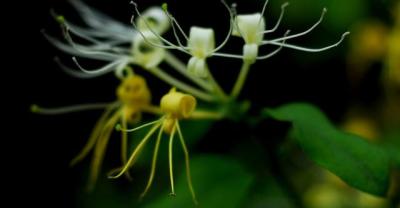How to plant pollution-free rice?
If you like, please follow us.
In order to grow pollution-free rice, we must first understand what is the principle of pollution-free rice.
Planting pollution-free rice should abide by the principle of sustainable development and production according to a specific mode of production. There are strict requirements from the beginning of the selection of seeds, the use of reasonable close planting pesticides should follow the principle of plant protection, "prevention first, comprehensive control", as far as possible not to use chemical pesticides, as the saying goes, "is the third poison of medicine."
The main growth conditions for planting pollution-free rice are no pollution and residue in soil, water and air. Seeds cannot be genetically modified or mixed with seeds. The planting process does not use any pesticides or chemical fertilizers, but can only use biological control and organic farm manure. Processing, transportation, packaging and storage should meet the organic requirements.
The environment of the producing area must be tested by qualified testing institutions. The water for irrigation (drinking water for livestock and poultry, processing water), soil and atmosphere meet the national environmental quality requirements for the production of pollution-free agricultural products, and there are no polluting enterprises within 3 kilometers of the producing area. Vegetables, tea, fruits and other producing areas should be more than 100 meters away from the main road; the producing areas of pollution-free agricultural products should be concentrated, the products are relatively stable, and have a certain scale.
Planting, production and processing in accordance with the national organic agricultural production standards. Do not use biological products obtained by genetic engineering in production; do not use chemical synthetic pesticides, chemical fertilizers, growth regulators, feed additives and other substances; follow the laws of nature and ecological principles to coordinate the balance of planting and aquaculture; organic rice terminal fruits are obtained by using a series of sustainable and advanced agricultural technologies to maintain a sustainable and stable mode of agricultural production.
How to do it exactly?
In the high-yield cultivation of pollution-free rice, the first thing to do is to select two kinds of pollution-free rice.
In the selection of pollution-free rice seeds, ① requires good quality, strong disease resistance and high yield.
The pollution-free rice Zhongzi selected by ② not only requires high quality, but also needs to comply with the principle of adjusting measures to local conditions. Only by considering the local planting conditions can it be enough to promote the whole process of pollution-free rice production in line with the local soil conditions, climatic factors and so on. Finally, it can promote the high yield of pollution-free rice.
③ in the selection of pollution-free high-quality rice seeds, in order to improve the physical properties of seeds, ultraviolet radiation should be carried out, so that the scarlet letter bacteria can be killed and improve the emergence rate of pollution-free rice seeds.
Second, apply pollution-free organic fertilizer
In the cultivation of pollution-free rice, it is required to avoid the application of harmful substances such as chemical fertilizers, so this leads to less yield of pollution-free rice. In order to ensure the high output value of pollution-free rice, it is necessary to apply pollution-free organic fertilizer to the land planted by rice before planting. At this stage, the most common pollution-free organic fertilizer is straw returning to the field. Using straw to return to the field can not only avoid the air pollution caused by burning, but also increase the organic matter in the soil and improve the soil quality.
2. Scientific management of paddy fields
After the cultivation of pollution-free paddy field, it is necessary to achieve scientific management of paddy field. In the scientific management of paddy fields, rational irrigation of paddy fields should be carried out first: farmers are required to irrigate according to the growth of paddy fields when planting pollution-free rice, and according to the requirements of irrigation water in paddy fields. Moderate irrigation. Secondly, the addition of harmless organic fertilizer should be carried out at the right time: generally, nitrogen fertilizer should be applied 5-7 days after planting, and no or less tillering fertilizer should be applied in the fields with early tillering.
Finally, scientific management of paddy fields also requires the prevention and control of diseases and insect pests: because the content of harmful substances in pollution-free rice is very low, the most important thing in the prevention and control of diseases and insect pests in pollution-free rice is the rational use of physical control. carry out artificial hunting and weeding, and use the natural enemies of diseases and insect pests to treat diseases and insect pests. In order to ensure the effective production of pollution-free rice fields and the increase of yield.
- Prev

You are told to plant dragon fruit by hand.
First of all, prepare a dragon fruit wrapped in gauze or thin cloth, the purpose is to separate the flesh from the planting of the preliminary processed dragon fruit seeds, repeatedly.
- Next

Planting and Edible function of Phyllostachys pubescens
Phyllostachys pubescens, Gramineae, uniaxial scattered evergreen treelike bamboo, rod up to more than 20 meters high, up to more than 20 cm thick, old rod glabrous, and green.
Related
- Fuxing push coffee new agricultural production and marketing class: lack of small-scale processing plants
- Jujube rice field leisure farm deep ploughing Yilan for five years to create a space for organic food and play
- Nongyu Farm-A trial of organic papaya for brave women with advanced technology
- Four points for attention in the prevention and control of diseases and insect pests of edible fungi
- How to add nutrient solution to Edible Fungi
- Is there any good way to control edible fungus mites?
- Open Inoculation Technology of Edible Fungi
- Is there any clever way to use fertilizer for edible fungus in winter?
- What agents are used to kill the pathogens of edible fungi in the mushroom shed?
- Rapid drying of Edible Fungi

